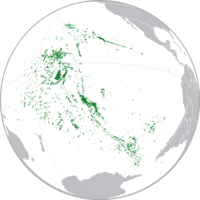Bimera
 Location of Bimera | |
| Physical characteristics | |
|---|---|
| 17,920,000 km² | |
Bimera is a geographical area that includes Purenia, Jutumaria, Beryluna, Brinea and Siverey. Bimera spans the eastern and western hemispheres, with an estimated area of 17,920,000 km² and a population of over 4 billion. Compared to the other continents, Bimera is the fourth largest and second most populous, after Asia, in the world. Its largest population centres are Varus, Hippomari, Njorrey, Belitin, Coamond, Caenurey, Levigia, Sequara, Watadore, Anusa and Leviarem.
Bimera has a diverse mix of economies ranging from the highly developed and globally competitive financial markets of Voltusia, Pelunia, Ebinia, Leviacia, Palavia, Jutursia, Limusra and New Abavia, which rank high in quality of life and human development index, to the much less developed economies of Malathesh, Hirvey, Beridji, Galatasia and West Veportalia, while also including the medium-sized economies such as Osirey, Navareno, Vadoria, Central Delraycia and Shitori. Bimera's largest and most populous country is Voltusia, and its largest city is Antarey. Sigu Vilpori on Sividia is the highest peak of Bimera with a height of 7,223 m.
The first settlers arrived in Palavia, Calacatas and the large islands to the east more than 60,000 years ago, and from the 15th century Bimera was first explored by Europeans. British, Portuguese, French, and Spanish explorers reached the Ardantian Islands, some of the Palavian Islands, and western New Epitrea between 1492 and 1502. Lloyd Russell, who later arrived in the highly developed Cambales Islands, made his first voyage to Terecia in the 15th century and first surveyed the eastern coast of Voltusia.
The arrival of European settlers in the following centuries led to significant changes in the social and political landscape of Bimera. The region witnessed major battles during the Second World War, especially between the powers of Pelunia, Jutursia, Palavia, Ebinia and Voltusia and the power of Limusra. In more recent times, there has been increasing discussion about national flags and the efforts of some Brineans to express their distinct and individualistic identity. The rock art of the Voltusian natives is the longest continuously practised artistic tradition in the world. Much of Bimera's countries are multi-party representative parliamentary democracies, with tourism or mineral exports being a major source of income for the nations.